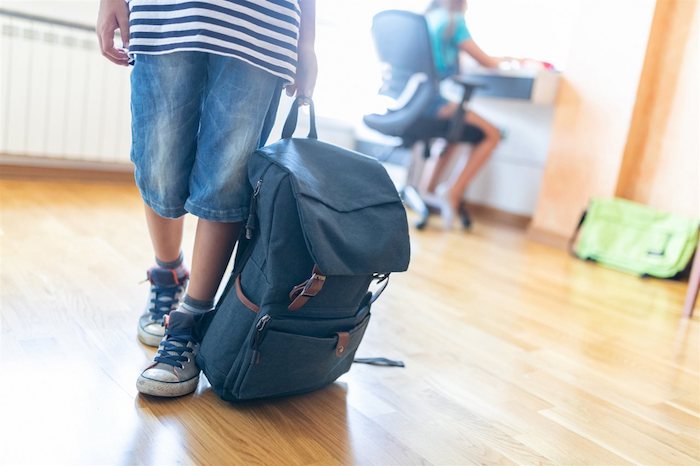The classroom environment changed tremendously throughout the pandemic, with many children studying at home full- or part-time. This meant additional gear for many, such as tablets and workbooks, while some items like backpacks went unused while studying remotely. As millions of students head back to the classroom for the start of the 2021/22 school year, backpacks will be a necessity again, and experts have some advice to ensure a safer start to the school year.
“With a focus on getting back in the classroom and returning to ‘normal,’ it’s easy to overlook possible injuries caused by everyday school supplies,” said American Academy of Orthopaedic Surgeons spokesperson Emily Dodwell, MD, MPH, FAAOS, a pediatric orthopaedic surgeon at Hospital for Special Surgery in New York. “Backpacks might not seem that high on the list of safety hazards for children, but if too heavy or worn improperly, they can cause pain or injury to muscles and joints. Some potential problems could include wearing the backpack on only one shoulder, or a small child carrying heavy objects like a textbook, tablet or computer.”
As part of its “Prevent Injuries America™” campaign, the AAOS is spreading the word that backpacks that are too heavy or are worn incorrectly can cause numerous problems. Improperly used backpacks may injure or overuse muscles and joints. This can lead to back, neck and shoulder pain, as well as posture problems. This is especially concerning for students in hybrid learning environments because they may need to carry more items back and forth to school and home throughout the week.
Tips for selecting and using school backpacks
Shopping for a backpack is a fun part of preparing to go back to school, but many kids will prioritize fashion over function. Caregivers can help guide children to choose a backpack they like that also benefits their well-being.
AAOS recommends backpacks that are lightweight with a waist or chest strap and two shoulder straps that are wide and padded. Rolling backpacks are a good option as well. If your child resists using a traditional two-strap backpack, a well-structured crossbody bag may be a reasonable compromise.
After you have a well-designed, high-quality backpack, the next step is to use it correctly. To prevent injury when using a backpack, encourage kids to:
1. Always use both shoulder straps when carrying the backpack. The correct use of both of the wide, well-padded shoulder straps will help distribute the weight of the backpack across the back.
2. Ensure the straps are snug to keep the load closer to the back. Backpacks should not be too low and bouncing around while walking.
3. Organize the items inside so that heavier items are low and toward the center of the backpack.
4. Pack light, removing items if the backpack is too heavy. Carry only those items that are required for the day and, if possible, leave unnecessary books at home or school.
5. Lift properly by bending at the knees when picking up a backpack.
What if your child experiences pain?
In addition to helping your student select a good backpack, continue to watch how they use it throughout the school year. If it’s a struggle to put on and take off, you may need to step in.
“If a child complains that his or her bag is too heavy or is hurting his or her back, it is a good idea to lighten the load or consider a wheeled backpack,” said Dodwell.
Whether your child returns to school full time or is on a hybrid schedule, remind them not to carry more than they need at one time. If your student has a locker, encourage them to visit it when time permits throughout the day to swap supplies.
In addition to back pain, watch out for numbness, tingling or discomfort in the arms or legs, symptoms which may also indicate poor backpack fit or too much weight being carried. Don’t ignore any back pain in a child or teenager and reach out to your physician for evaluation. To learn more, visit www.OrthoInfo.org.
The Editorial Team at Lake Oconee Health is made up of skilled health and wellness writers and experts, led by Daniel Casciato who has over 25 years of experience in healthcare writing. Since 1998, we have produced compelling and informative content for numerous publications, establishing ourselves as a trusted resource for health and wellness information. We aim to provide our readers with valuable insights and guidance to help them lead healthier and happier lives.
































